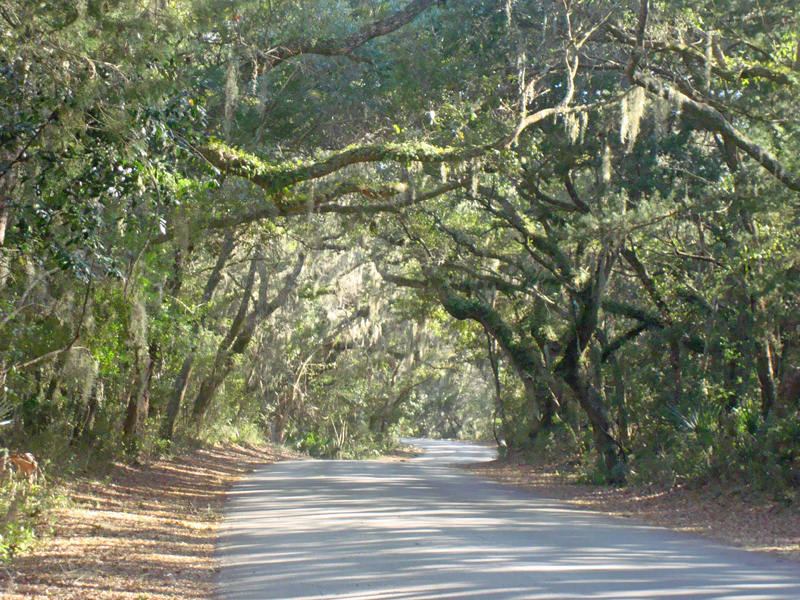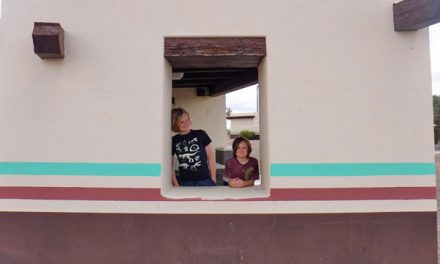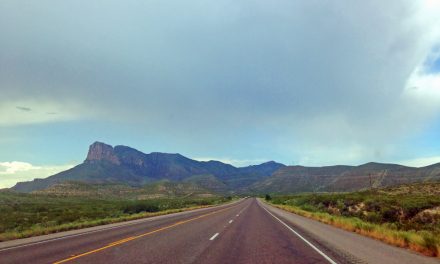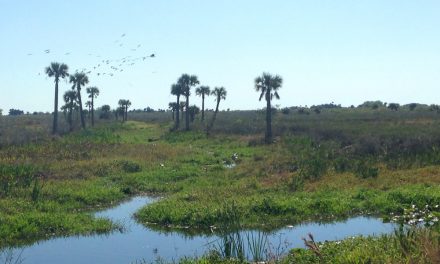Florida is naturally scenic — from the rolling hills of the north, to the beaches (1,350 miles of coastline), to its marshes, swamps, and forests (3 national forests plus several state forests). Even city skylines are Instagrammable. So you’ll definitely find scenic drives in Florida. Think of these scenic drives as mini road trips, and you’ll find fun family adventures.
Here are 4 scenic drives in Florida that are worth your time. Make them a day trip, or stay the night and create a memorable family vacation.
1. Jacksonville Beach to Daytona Beach
Just south of Jacksonville’s sprawling metropolis, you can begin a drive down Florida’s beautiful northeastern Atlantic coastline. This is Florida’s “historic coast,” where localities mark centuries of history.
Start: Oceanfront Park.
Head south on scenic A1A to Ponte Vedra Blvd, then take this road south to Mickler’s Landing for another beach stop.
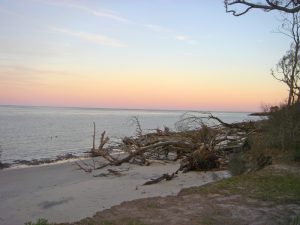
The sun sets on Big Talbot Island
The road catches up with A1A again. Continue south, paralleling the Guana River on your right and the Atlantic Ocean on your left.
Stop at Guana Tolomato Matanzas National Estuarine Research Reserve. That’s a mouthful, but GTM is a wonderfully natural estuary that’s fun to explore. There are miles of trails. Launch a boat or paddle craft into the water. Visit in October for peregrine falcon sightings as they migrate. Or go in winter when you might spot a right whale off the coast.
Soon you’ll be going over the bridge to St. Augustine, where your family will enjoy a visit to Anastasia State Park (great for camping near the beach) and St. Augustine Alligator Farm Zoological Park. (Try the zipline over the gators and crocs.) Ghost tours, a historic fort, a lighthouse — St. Augustine will hold your family’s attention for several days.
South of St. Augustine, take the ferry to Fort Matanzas National Monument for a look at Florida history and nature. If you love the river area, see more of it with an ecotour.
Kids will enjoy learning about marine life at Marineland.
Next stop: Washington Oaks Gardens State Park, which stretches from the river to the ocean, as well as Gamble Rogers Memorial State Recreation Area, where you can camp near the beach. Both state parks offer pretty views.
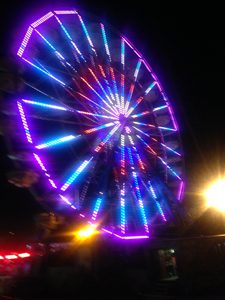
Daytona Beach Pier is fun even after dark
End: The road takes you to Daytona Beach, where the Boardwalk & Pier is a family must-do for its amusement park rides. Drive and park your car on the beach, then stay the night in nearby lodging.
Side trip: North of Jacksonville, start at Huguenot Memorial Park. Drive north on A1A to Kingsley Plantation on national park grounds for a look at the area’s history. Then head on to Little Talbot Island State Park for more beachy, barrier island goodness. Drive north and stop in a Big Talbot Island State Park for quiet beachside trails. Back on the road, you’ll soon be on Amelia Island, where you can ride horses on the beach at Amelia Island State Park. Continue north to Fernandina Beach for more Historic Coast history and a look at the old fort at Fort Clinch State Park.
2. Key Largo to Key West
The drive down the Overseas Highway along the island chain known as the Florida Keys can take you hours or days. There’s plenty to keep your family busy here for weeks. If all you have is one day, though, make the Miami area your base, start early, and prioritize the stops you want to make on the way to Key West and back. Our family has made this drive in one day several times, so we know it can be done. (It’s more fun to stay overnight and spend more time, though, of course.)
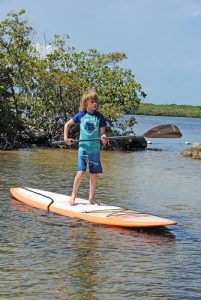
Paddleboarding at John Pennekamp Coral Reef State Park
Start: John Pennekamp Coral Reef State Park is a good place to get a sense of what the Keys are all about, nature-wise. Take a snorkel tour or glass-bottom boat tour of the offshore reefs, rent a kayak, or hang out on the beach. A concessioner offers food and souvenirs. You can camp here, too.
If you don’t get into the water through the park, definitely try at least one snorkel tour in the Florida Keys during your visit, or charter a boat for fishing.
Drive south to Harry Harris Park to stop in at the beach. Despite miles of coastline, the Keys don’t have many beaches — the shores are typically rocky or lined with mangroves.
While you’re still in Key Largo, visit the Florida Keys Wild Bird Rehabilitation Center. The center helps birds with medical issues and houses birds that can’t be released in the wild.
Farther down the road into Islamorada, Theater of the Sea draws families and marine life lovers with animal exhibits with swim-with programs.
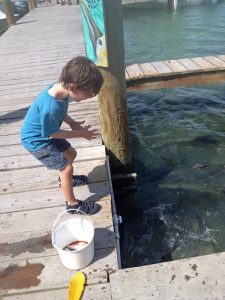
Kids love feeding the tarpon at Robbie’s
Kids love buying a bucket of fish and feeding the tarpon off the docks at Robbie’s Marina. Here you can take a boat tour, rent a kayak, have lunch, and check out local artists all in one spot. Our family likes to paddle under the Overseas Highway bridge to Indian Key. You can also paddle to or take a tour of Lignumvitae Key, on the north side of the bridge.
In the middle Keys, stop in at Long Key State Park and Curry Hammock State Park for access to the beach, kayaking and beachside camping. These are also great places to see wildlife.
In Marathon, take a tour of the Turtle Hospital to learn about sea turtles and see how people help these injured reptiles.
The Overseas Highway Seven-Mile Bridge gives drivers views of the beautiful aquamarine-to-turquoise waters as you make your way to the Lower Keys. Once there, Bahia Honda State Park is a must-do with its beach, trails, and walk to the edge of the Old Bahia Honda Bridge. Take a snorkel tour, rent kayaks, and watch boats come and go from the marina. You can camp here or stay in a cabin, although sites are hard to get.
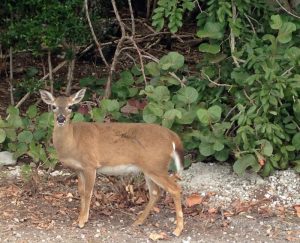
Find Key deer on Big Pine Key
Continuing south, you’ll see warning signs for deer crossings. These are the Key deer, a smaller subspecies of the white-tailed deer you find throughout North America. They live primarily on Big Pine Key. You can drive through the streets past homes on Big Pine and spot the deer grazing. Feeding and harassing the deer are prohibited because they are endangered. Stop in at the National Key Deer Refuge visitor center, or walk the trails in various tracts on the island.
On nearby Ramrod Key, stop at Boondocks Grille & Draft House for the only mini golf in the Keys and for a meal — and maybe live music.
End: Key West is the end of the line, where the Overseas Highway ends at Mile Marker 0. Please see The Pack’s article on Key West for families for detailed Key West info.
Please note some sites are still recovering from Hurricane Irma.
3. Southern Tamiami Trail
US 41 between Tampa and Miami is also known as Tamiami Trail, a cross between the words “Tampa” and “Miami.” From Tampa to Naples, most of this road is the commercial center of the cities it crosses. From Naples to Miami, however, it is mostly natural and goes through wild lands.
Start: Tin City in Naples is an outdoor waterfront shopping and dining mall where you can find unique small shops. Nearby, kids will enjoy Coral Cay Adventure Golf.
Continue east, and you’ll notice the buildings thin out as you head into the wilderness. Check out Collier-Seminole State Park, where you can rent a canoe or kayak, see historical exhibits, and camp. There are also trails through the subtropical hammock to the west of the main entrance; ask a ranger about them.
Next you’ll come upon Fakahatchee Strand Preserve State Park. Most of the park isn’t accessible to visitors, but right from Tamiami Trail, you can walk the Big Cypress Bend boardwalk. This gives you a glimpse of the Fakahatchee, the largest strand swamp in the world. Look for a parking area on your left next to a native neighborhood. You’ll definitely want insect repellent on the boardwalk.
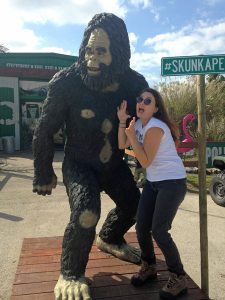
Does the Skunk Ape exist? Find out!
As you make your way east, you’ll see some launch areas to use if you have your own boat. You can follow these waterways all the way to Ten Thousand Islands National Wildlife Refuge if you like.
At and around the intersection of State Road 29, you’ll find airboat tour outfitters that will take you into the Everglades. You’ll learn about the nature and history of the area.
Next up, one of the Big Cypress National Preserve visitor centers. Stop in here to get a map of the preserve if you want to use the trails or explore the back roads. You can camp in Big Cypress, too, and there are sometimes ranger programs. You’ll find campgrounds, parks, and roads on the waysides just off Tamiami Trail. These areas are great for wildlife watching or having a picnic.
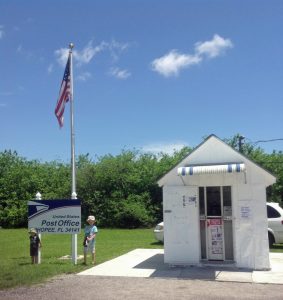
The smallest post office in the USA is also on a scenic drive in Florida
You’ll want to stop at the post office down the road, if only for a minute, to snap a quick picture. The Ochopee post office is the smallest one in the United States!
Some people believe the Everglades has its own mythical (or real) beast, the skunk ape. The Skunk Ape Headquarters offers tours, exhibits and souvenirs. Behind the main building, you can also stay overnight in a chickee cottage and take an ecotour with Everglades Adventure Tours.
Various Big Cypress parks are long the road, and then you’ll come upon the Big Cypress Oasis visitor center. You can access the Florida Trail here. This is also a good place to see alligators from the observation platform/boardwalk.
Not far from here is famed photographer Clyde Butcher‘s Big Cypress Gallery. Stop in to view his large-format black-and-white photography. His wife, Niki Butcher, also creates images by hand-painting negatives. Their work and souvenirs are for sale in the gift shop.
Believe it or not, you’ll still be in Big Cypress for several more miles, and you’ll see Miccosukee tribe settlements on the road too, along with native restaurants, attractions, and tours.
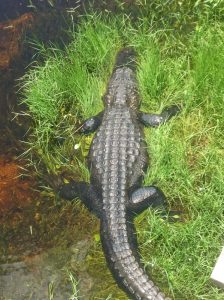
You can see alligators in Big Cypress National Preserve and Everglades National Park
Eventually, you’ll leave the preserve and come to the Shark Valley Visitor Center of Everglades National Park. There are no sharks here; neither is there a valley. It’s all flat marshland. Take the tram tour or rent a bicycle to travel the paved 15-mile loop trail. There is no shade. You’ll likely see alligators and birds as you make your way to the observation tower around the halfway point, then come back to the parking lot. There are also a couple shorter trails, including a shady one through a swamp.
End: When you reach Krome Avenue, you’re on the western edge of Miami. Continue east into the city, or turn south and get to the Ernest F. Coe Visitor Center of Everglades National Park.
Note: Gas stations and banks are scarce along most of this part of the road.
Side trip: At the intersection of Tamiami Trail and State Road 29, you can turn south to visit the fishing villages of Everglades City and Chokoloskee, or turn north and explore Florida Panther National Wildlife Refuge.
4. Panhandle’s coastline
This is a quieter part of Florida — with the exception of Panama City — where you’ll drive from vacation home paradise to party zone to fishing village, and see neighborhoods all along the way. The beaches are beautiful, and there are great natural areas to explore. Mostly you’ll be driving on US 98 along the Gulf of Mexico coast, although to see everything you’ll need to get off this main road, beginning with the starting point.
Start: East of Destin, Topsail Hill Preserve State Park has the beautiful white sand this part of Florida is known for, so the beach is popular. Rent a bike or hike the trails. Paddle on the coastal dune lake. Stay at the campground or in a cabin. The park is great no matter what you do.
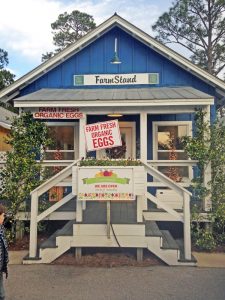
You’ll find fun shops along 30A
You’re on 30A, a place that is a destination as much as it is the name of the road you’re on. Continue southeast through this popular vacation area. You’ll find cafes, art galleries, unique shops, yoga studios, bike and kayak rental stores, resorts, and vacation rentals all along the route.
You’ll want to stop at Grayton Beach State Park, similar to Topsail Hill in that you’ll find a great gulf beach, hike and bike trails, a campground, and cabins. You can rent kayaks too.
Keep going east on 30A, and you’ll come to the city of Seaside. The town square with its picturesque post office and row of Airstream food trucks is so charming that you’ll want to stop to take pictures or get something to eat. Even the entrance to the beach is stylish. Other towns farther east offer photographic places to stop, too.
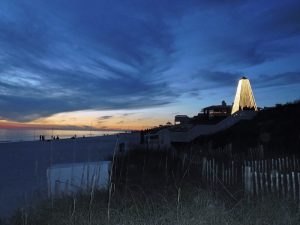
Seaside is a scenic town on the Gulf of Mexico
At Inlet Beach, 30A joins US 98. Keep going east here, and you’ll get to Camp Helen State Park, which offers you another chance to get to the beach, and also a nature trail and pretty views of the coastal dune lake. Soon you’ll have the choice to keep going on US 98 or take 30, which is closer to the coast. Route 30 eventually comes back to US 98, so the choice is yours.
Next you’ll wind up in Panama City Beach. A longtime spring break and summer vacation spot, PCB has all the fun tourist places you’d expect, like water parks, indoor play areas, a zoo, aquarium, pubs, and souvenir shops. You’ll find several dolphin-watching boat tours. You’ll also find St. Andrews State Park offering a beach, trails, nature center, and camping. There’s a boat shuttle to Shell Island just offshore.
After leaving Panama City, continue east on US 98 through Tyndall Air Force Base. Around Mexico Beach, you’ll be able to see the Gulf of Mexico again, on your right. In Port St. Joe, 30A picks up again and hugs the coast. If you pick up 30E and go west, you’ll be on Cape San Blas, a narrow peninsula that sticks out into St. Joseph Bay and ends with T.H. Stone Memorial St. Joseph Peninsula State Park. Like the other state parks here, you’ll find white-sand beaches, dunes, and trails. You can camp here and stay in a cabin. There are also vacation rentals in the area.
If you’re an adventurous wildlife-loving family, you can look for endangered red wolves on St. Vincent Island off shore. St. Vincent National Wildlife Refuge preserves this undeveloped island that is home to red wolves that are part of a recovery program. Going back east on 30A, take 30B to the end of the road, where at Indian Pass there’s a boat ramp right across from the island. You can get a shuttle to take you there. There are no facilities on the island.
Route 30A blends into US 98 again, and you’ll come to Apalachicola, a quaint fishing town. This is part of what is known as the Forgotten Coast. Another bridge takes you over to St. George Island, mainly a resort island, where you’ll find Dr. Julian G. Bruce St. George Island State Park. The park has a beach, trails, and camping. People also like collecting seashells here. It’s far enough away from city light pollution that campers enjoy stargazing.
Cross back over the bay and keep going east with the emerald-colored gulf on your right. The small towns here are big on fishing, and you’ll find marinas and fishing charters along the route.
End: St. Marks National Wildlife Refuge sits right in the curve of Florida’s Big Bend area, 30-40 minutes south of Tallahassee, the state capital. There are miles of trails here where people enjoy wildlife watching. Birding is especially popular at St. Marks.
Note: Some services close in winter, which is the off-season in the Panhandle. On the other hand, you can avoid crowds then. State parks are open year-round, but concessions and rentals might close in winter.

